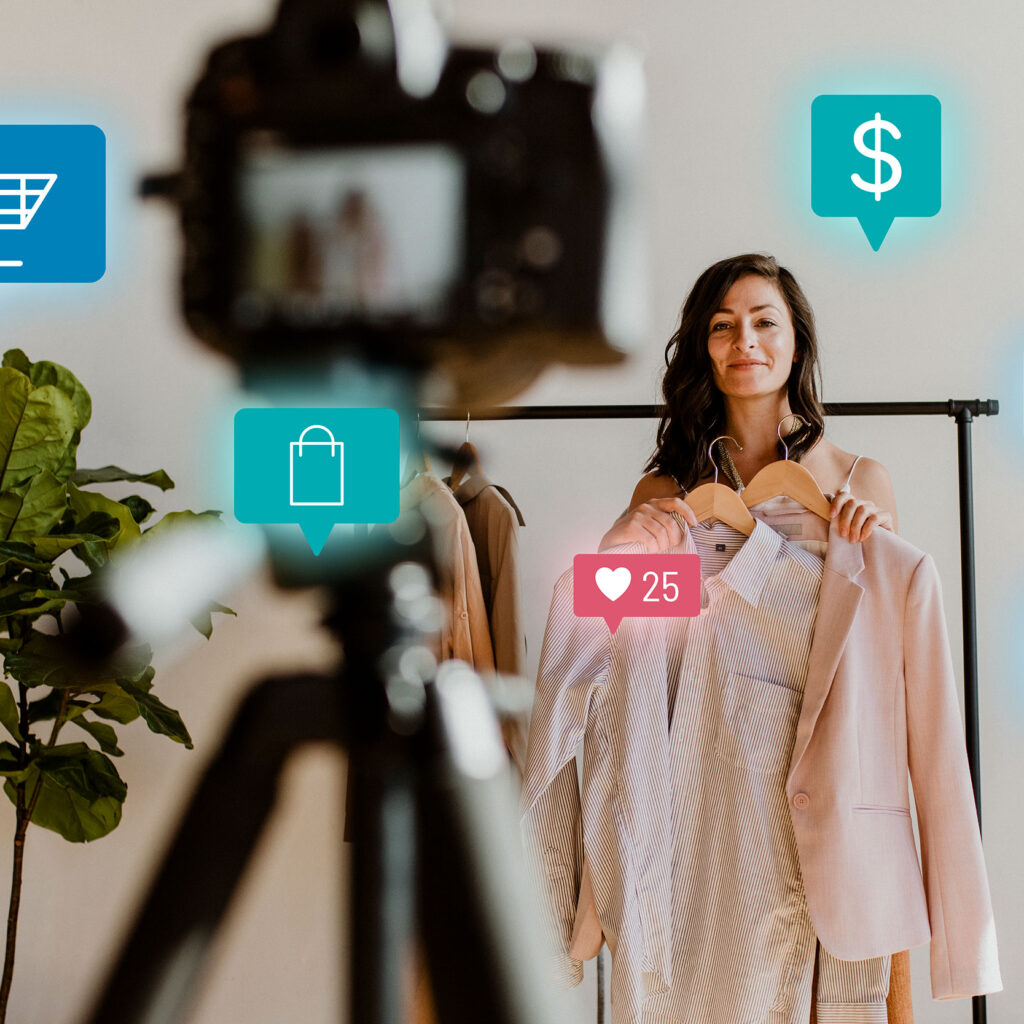There are signs that our individualist culture of achievement and brand alignment has jumped the shark.

It’s hard to remember a time when scrolling through Instagram was anything but a thoroughly exhausting experience.
Where once the social network was basically lunch and sunsets, it’s now a parade of strategically-crafted life updates, career achievements, and public vows to spend less time online (usually made by people who earn money from social media)—all framed with the carefully selected language of a press release. Everyone is striving, so very hard.
And great for them, I guess. But sometimes one might pine for a less aspirational time, when the cool kids were smoking weed, eating junk food, and… you know, just chillin’.
Back in the 1990s, our heroes were slackers: the dudes and the clerks, the stick-it-to-the-man, stay-true-to-yourself burnouts we saw in Ferris Bueller’s Day Off, and Slacker, and Reality Bites. In the latter, Winona Ryder’s character, Leilana, chooses the disillusioned musician (Ethan Hawke) over the TV exec (Ben Stiller), and it’s presented as an excellent choice. Nobody cool was trying to monetize their lifestyle back then, or rake in the brand endorsements. Selling out (remember that?) was whack.
But somewhere in the early 2000s, the slacker of popular culture lost ground to the striver. I am not immune to this thoroughly aspirational mindset, and you probably aren’t either. Whether we have side hustles, personal brands, gig economy jobs, or entrepreneurial leanings (I’ve had all four), to survive in the modern economy is to aspire to something much greater than what we are.
The internet influencer is the apotheosis of all this striving, this modern set of values taken to its grotesque extreme: Nothing is sacred, art has been replaced by “content,” and everything is for sale. This is true even when the message is swathed in the language of counter-culture: Eco-conscious influencers see no issue in flying long-haul on free trips from brands. Yoga gurus who traffic in anti-consumerist spirituality promote tea brands owned by Unilever.
But as anyone who has lived a few decades knows, youth culture swings like a pendulum. The buttoned-up post-World War II period gave way to the countercultural Free Love generation (arguably the original slackers, as they were the first to have middle class comfort to rebel against). Similarly, the 1980s excess of Gordon Gecko’s Wall Street set the stage for the slackers amid the economic recession of the 1990s, with their flannel shirts, skater culture, Beastie Boys and Nirvana records.
Of course, it’s reductive to lump the experience of the billions of people living through those ages into one mostly American cultural trope. But there’s always something to glean from the dominant youth culture of an era. What was cool—what the kids were into—tells us something fundamental about what we valued. And seen through that lens, there’s a marked difference between today’s striving and the slacking of the 1990s.
And, in a modern aspirational marketplace so saturated that fake influencers are now posting advertising-like content that nobody even paid them for, there are signs that our individualist culture of achievement and brand alignment has jumped the shark. If the cycle of history is any guide, once our culture of striving flames out, it may well be time for the slacker to rise again.

The Neoliberal Self
For the internet influencer, everything from their morning sun salutation to their coffee enema (really) is a potential money-making opportunity. Forget paying your dues, or working your way up—in fact, forget jobs. Work is life, and getting paid to live your best life is the ultimate aspiration.
This existence is perfectly aligned with what Will Storr, in his 2017 book Selfie: How the West became self-obsessed, described as the defining person of our age, the neoliberal self: “an extroverted, slim, beautiful, individualistic, optimistic, hard-working, socially aware yet high-self-esteeming global citizen with entrepreneurial guile and a selfie camera.” And while the generation most associated with this archetype—millennials—gets flack for their entitlement and unwillingness to work toward a typical middle class life, there are plenty of reasons millennials have so thoroughly embraced and innovated upon this neoliberal ideal.
“You can see why that happens in terms of the shrinking of middle class industries and the economy,” says Laurence Scott, author of Picnic Comma Lightning: In Search of a New Reality, an exploration of the nature of reality in the digital age, and a lecturer at NYU’s London campus. “Neoliberalism has hollowed out so many ways of [making a] stable income that it’s not surprising that the influencer economy has risen up in this really precarious economic climate for millennials.”
That neoliberal sensibility—emphasizing the importance of markets above the intervention of the state, and typified by the attitude that the tide of growth and globalization will lift all boats—has also given rise to the thoroughly modern affliction that we now call “millennial burnout.” A coinage by Anne Helen Petersen in her memorable piece for BuzzFeed, the idea is that all this self-optimization in the digital age is taking a toll, and leaving us with multiple afflictions, including “errand paralysis.”
Petersen argues that we’re obsessed with self-optimization because—post-financial crisis, saddled with student debt, with little hope of a pension—we simply have to be: “We couldn’t just show up with a diploma and expect to get and keep a job that would allow us to retire at 55. In a marked shift from the generations before, millennials needed to optimize ourselves to be the very best workers possible.”
The result is an economy where it’s more possible than ever to be your own boss, and a lot less possible to buy your own home. And one where it’s literally unimaginable that we’ll ever be able to stop working—at the end of the workday, or in the later years of our lives.
It’s enough to make you want to throw up your hands and admit defeat, if only for a moment of respite. And it’s easy to see how this exhaustion could precipitate the next cycle of slackerdom.
Scott first raised that idea in an interview on Russell Brand’s podcast. “The generation after [this one] may just look and think, ‘I cant believe there was that kind of economy and that’s how people were presenting themselves,’” he said. “There may be a slight distaste to it and reemergence of a slacker 1990s pendulum swing, rather than this quite needy attention-seeking.”

Go Ahead and Sell Out
“Selling out” is not just perfectly OK in the influencer economy—it’s the raison d’etre. Influencers generally do not have a craft or discipline to stay loyal to in the first place, and by definition their income comes from selling a version of themselves. The phrase “famous for being famous” used to be a derisive slur for socialites; now it’s an entire category of global commerce that has landed the world’s youngest “self made” billionaire on the cover of Forbes: Kylie Jenner.
And now, even public figures who do have a craft have followed suit. Hollywood actors used to worry about undermining their reputations, and would only take on cringe-y but lucrative advertisements that air in markets far removed from their core fanbases. But the internet means there is no such barrier today.
Look no further than Tom Hiddleston’s truly bizarre and memeified ad for Centrum. The talk show host and author Busy Phillips is a celebrity-turned-influencer-turned-celebrity—a transformation you can track from the promos for her network TV talk show, alongside sponsored content for Kate Spade featuring her daughters. And never forget that time when America’s most notable authors shilled for Chipotle.
That today’s celebrities and artists are no longer shy about displaying their endorsement deals with corporations—but rather, celebrate them—feels in stark opposition from the sensibility of the group of comics and actors known as “the posse” in the 1990s. The likes of Kathy Griffin, Ben Stiller, Janeane Garofalo, and Andy Dick typified the ethos of the slacker era.
“Posse members obsess about the idea of selling out,” A 1997 New York Times profile of the group of actors reads. “Stiller says: ‘A lot of us got disillusioned with hackdom. I remember when Janeane [Garofalo] was starting out, if something killed onstage at the Improv, she would intentionally not do it again. It’s almost like she was going too far the other way, because she didn’t want to be accepted.’”
It’s an attitude so antithetical to today’s ethos of engaging with your audience at all costs that it almost sounds precious. But back then, there was a reputational risk to selling out. Today we’re all too busy plotting our own ascents to notice.
Influencer Schadenfreude
So what evidence do we have that slackers are making a comeback? Much has been written about the attitude Gen Z has towards the internet: arguably far more sophisticated, suspicious, and interested in ephemeral content that disappears, rather than more permanent content that helps establish a commercially valuable identity.
It’s why we’ve seen the gradual eclipsing of Instagram posts by Instagram Stories and why the “Instagram aesthetic” is now in decline. People who knew no life before social media are already exhibiting an “ironic distance,” as Scott put it, to the very idea of being covertly influenced by corporate interests online. Even Mark Zuckerberg now sees the limitations of the constantly-broadcasting newsfeed he created—and much to the alarm of influencers, Instagram is toying with eliminating likes.
Fashion, which can also act like a pendulum, reflects this shift too, not just with its redux of grunge, but also with trends like normcore, and roomier pant-leg silhouettes (RIP skinny jeans). It’s all more reminiscent of the laid-back nineties than the mid-aughts striving of athleisure, where you’re always primed for a workout or Instagram picture. Even the once-unthinkable trend of face tattoos—which seems to be at once the ultimate personal branding ploy as well as a near-guaranteed opting out of traditional employment—seem to point to the idea that aspirational culture has reached its stylistic apotheosis.
What’s more, we’ve never been more skeptical of the very social media platforms that have quietly and powerfully shaped influencer culture. (Nor, it seems, have governments around the world.) We once saw these platforms as a frivolous, even fun place to post our memories and talk to our friends and family. Now, we understand them to be an often pernicious driving force behind societal, economic, and political shifts—supranational actors that, far from being the neutral platforms they frame themselves as, feed upon our striving as their sustenance.
We need look no further than the collective cultural sneering provoked by Fyre Festival to see how much of an appetite there is for influencer schadenfreude, as Scott pointed out. Similarly, in Silicon Valley—where just a few years ago the nerds, strivers, and takers-of-moonshots were exalted as the new masters of the universe—there’s a certain glee in seeing all this hubris brought low. Theranos founder Elizabeth Holmes’ spectacular demise has shown just how powerful a personal brand can be (the black turtleneck, the Stanford dropout story, the Yoda quotes) and simultaneously, just how much dysfunction it can conceal. And the slew of books, films, and TV shows about the collapse of her empire shows that we are more keen than ever to deride and mock those we have anointed as the striving geniuses of our era.

Is It Even Possible to be a Slacker Anymore?
But as we settle into our roomier trousers and perhaps take a toke of a legally sanctioned weed pen, there’s a less comfortable question to ask: Is it even possible to truly be a slacker anymore?
The neoliberal economic conditions that gave rise to the influencer—and all those side hustles and personal brands—simultaneously have made it harder to attain a normal middle class existence. Even if your goals are of the modest, slacker variety—an hourly wage job, a roof over your head, junk food to eat, and TV to watch—that’s all a hell of a lot harder to come by these days.
“Thinking about Reality Bites, I feel like they were relatively privileged, but they were sort of lazing around and they could sort of consist on hardly any money at all,” Scott said. “It’s really impossible to live an urban life on very little money.”
But perhaps that realization will lead some to divest from the belief that hard work and self-optimization will lead us to some capitalist promised land. The neoliberal ideal has reached its peak and, well, it’s not as though we’ve solved income inequality with all our hard work. Quite the opposite. As Storr writes of our culture’s failed promise: “It wants us to buy the fiction that the self is open, free, nothing but pure, bright possibility … This seduces us into accepting the cultural lie that says we can do anything we set our minds to … This false idea is of immense value to our neoliberal economy.”
Today, the evidence of that myth’s failure to deliver is all around us. We see it in the populist uprisings that conjured up Donald Trump and Brexit, and in the fact that one of America’s most visible Congress members, Alexandria Ocasio Cortez, identifies herself as “democratic socialist”—a term that would have been entirely unpalatable in America just five years ago. The idea of socialism as a realistic alternative to individualistic capitalism is gaining currency in youth movements elsewhere, too. It may just be a rumbling, or it could be a sign of a less individualistic (and less aspirational) era to come.
But even if it doesn’t happen at the economic level, Scott thinks the slacker revival may begin—as so many youth movements do—as a stylistic one. It simply will stop being cool to try so damn hard.
“It might be an aesthetic thing that drives this—just the style element,” Scott said. “A return to the idea that it’s slightly embarrassing to be in the pocket of all these corporations all the time, just for a little bit of money … an idea of artistry that isn’t linked to the corporate world.”
This is definetly The Age of the Influencer.



Add a Comment